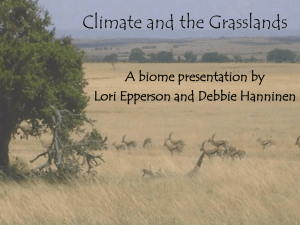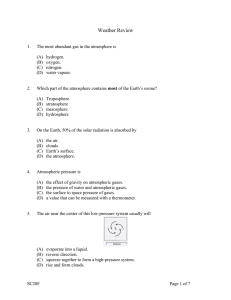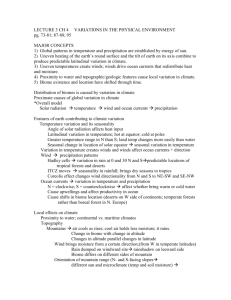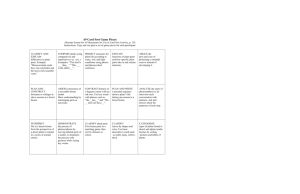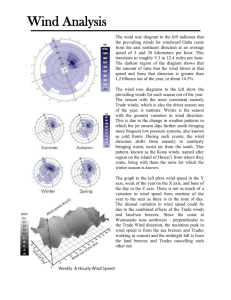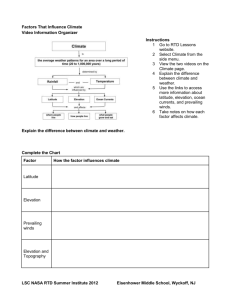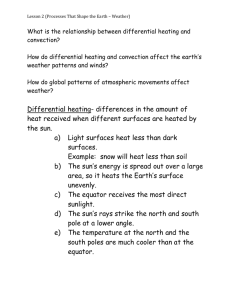APES - Chapter 5 and 7 TEST Review 1. Explain the following terms
advertisement
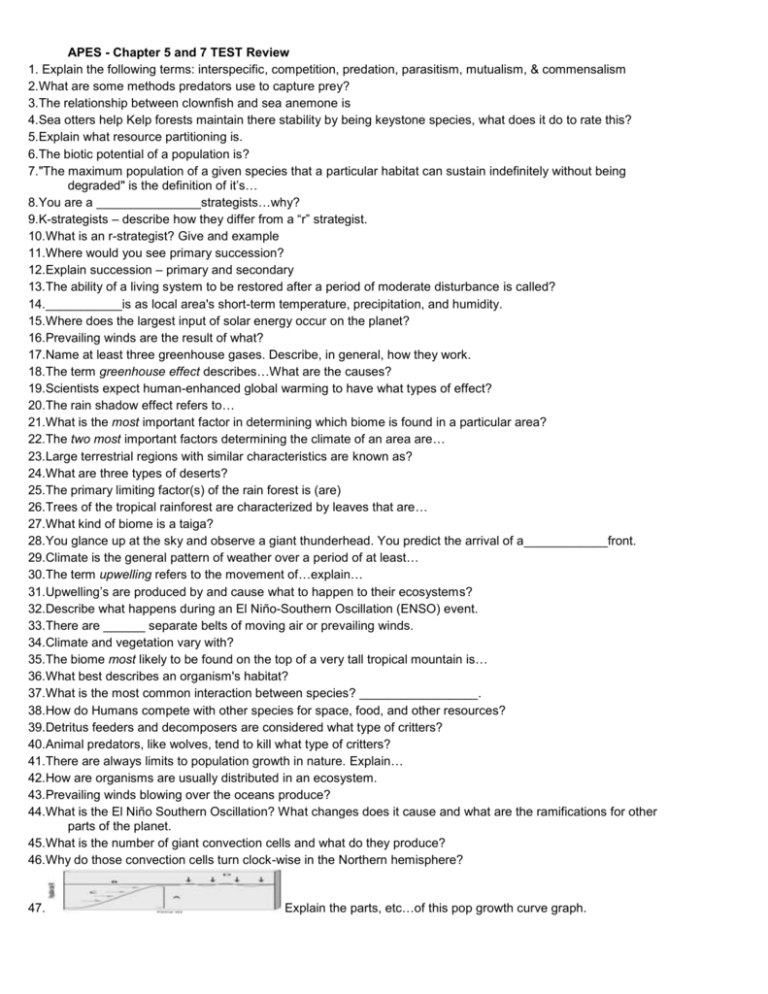
APES - Chapter 5 and 7 TEST Review 1. Explain the following terms: interspecific, competition, predation, parasitism, mutualism, & commensalism 2.What are some methods predators use to capture prey? 3.The relationship between clownfish and sea anemone is 4.Sea otters help Kelp forests maintain there stability by being keystone species, what does it do to rate this? 5.Explain what resource partitioning is. 6.The biotic potential of a population is? 7."The maximum population of a given species that a particular habitat can sustain indefinitely without being degraded" is the definition of it’s… 8.You are a _______________strategists…why? 9.K-strategists – describe how they differ from a “r” strategist. 10.What is an r-strategist? Give and example 11.Where would you see primary succession? 12.Explain succession – primary and secondary 13.The ability of a living system to be restored after a period of moderate disturbance is called? 14.___________is as local area's short-term temperature, precipitation, and humidity. 15.Where does the largest input of solar energy occur on the planet? 16.Prevailing winds are the result of what? 17.Name at least three greenhouse gases. Describe, in general, how they work. 18.The term greenhouse effect describes…What are the causes? 19.Scientists expect human-enhanced global warming to have what types of effect? 20.The rain shadow effect refers to… 21.What is the most important factor in determining which biome is found in a particular area? 22.The two most important factors determining the climate of an area are… 23.Large terrestrial regions with similar characteristics are known as? 24.What are three types of deserts? 25.The primary limiting factor(s) of the rain forest is (are) 26.Trees of the tropical rainforest are characterized by leaves that are… 27.What kind of biome is a taiga? 28.You glance up at the sky and observe a giant thunderhead. You predict the arrival of a____________front. 29.Climate is the general pattern of weather over a period of at least… 30.The term upwelling refers to the movement of…explain… 31.Upwelling’s are produced by and cause what to happen to their ecosystems? 32.Describe what happens during an El Niño-Southern Oscillation (ENSO) event. 33.There are ______ separate belts of moving air or prevailing winds. 34.Climate and vegetation vary with? 35.The biome most likely to be found on the top of a very tall tropical mountain is… 36.What best describes an organism's habitat? 37.What is the most common interaction between species? _________________. 38.How do Humans compete with other species for space, food, and other resources? 39.Detritus feeders and decomposers are considered what type of critters? 40.Animal predators, like wolves, tend to kill what type of critters? 41.There are always limits to population growth in nature. Explain… 42.How are organisms are usually distributed in an ecosystem. 43.Prevailing winds blowing over the oceans produce? 44.What is the El Niño Southern Oscillation? What changes does it cause and what are the ramifications for other parts of the planet. 45.What is the number of giant convection cells and what do they produce? 46.Why do those convection cells turn clock-wise in the Northern hemisphere? 47. Explain the parts, etc…of this pop growth curve graph.
